South Africa elephant hunting is strictly managed and based on availability. Elephant tags in are strictly controlled by CITES.
South Africa Elephant Hunting
In terms of legal hunting, South Africa and a select few other African countries are the only places where elephants can be legally hunted and imported to the USA. This limited availability may have an impact on future elephant hunting prices. The decision by the Botswana government to reopen commercial hunting is seen as a potential stabilizing factor for African elephant hunting prices.
Contrary to some opinions, elephants ARE NOT considered endangered.
In fact, several countries in Southern Africa have implemented culling operations to maintain a balanced population. Before any legal elephant hunt can take place, scientific studies must demonstrate the presence of a sustainable elephant population in the targeted region. Strict control by authorities ensures that government permits or tags are issued for hunting purposes. Elephant hunting in South Africa is legal but subject to strict quotas and tags.
You’ll be hunting KwaZulu-Natal, Mpumalanga or the Limpopo Province based on availability.
You’ll be hunting on the private ground surrounding the park, but they are the same free ranging elephants that reside within the park. These hunts are often management hunts, but occasionally there are trophy bulls available with limits on the weight of the tusks.
- In most areas you can only take management bulls that weigh 35 pounds or less. However, we do occasionally offer trophy elephant hunts near Kruger National Park.
- There are two isolated areas for bulls up to 75 pounds. There is a very small quota available and a very high demand. If you would like to hunt trophy elephant near Kruger National Park, you must book years in advance.
For pricing or more information on South Africa Elephant Hunting, contact us.
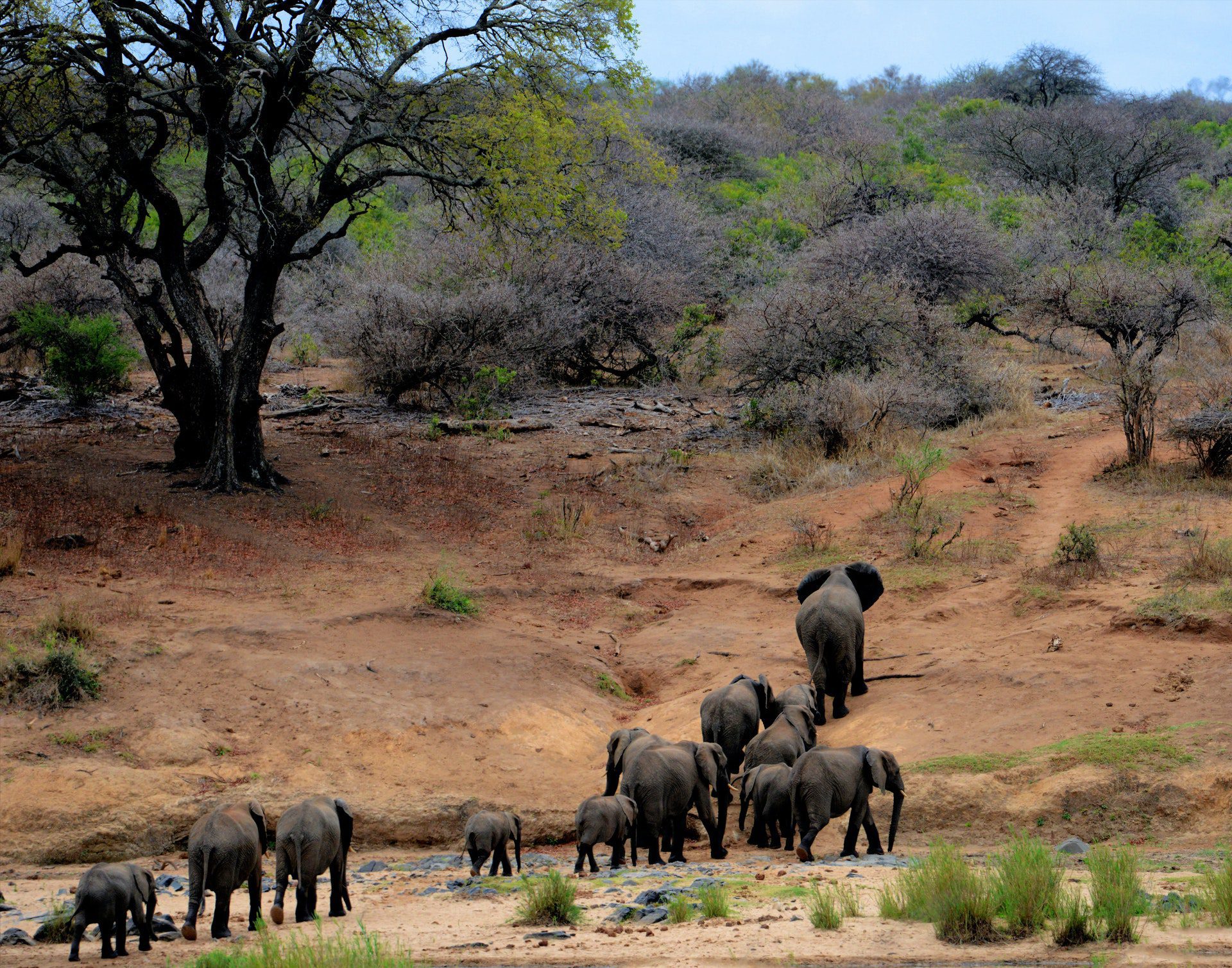
How to Hunt Elephants in South Africa
The African elephant is indeed the world’s largest land mammal, standing over eleven feet at the shoulder and weighing more than seven tons. With its dark grey skin, the elephant blends well into the dense brush of the bushveld. Despite its size, it can move through the bush with surprising speed and quietness. While its eyesight is relatively poor, it compensates with excellent hearing and an unparalleled sense of smell.
Throughout its lifetime, an elephant receives six sets of molars. As the previous sets wear down, the new set moves forward in its jaw. The final set of teeth usually appears around the age of 47, and once these wear out, the elephant may face slow starvation. Depending on its diet, the elephant’s life span typically ranges from 50 to 70 years.
As a herbivore, the elephant is a destructive feeder that prefers grass. Instead of adapting to its habitat, it adapts the habitat to suit its needs. It can consume up to 500 pounds of grass and browse each day. Elephants are highly social animals and can be found in herds consisting of cows, calves, and adolescents. Bulls, on the other hand, are often solitary or form small bachelor herds, occasionally joining cow herds. It’s worth noting that tuskless cows and cows with calves can display extreme aggression.
Hunting an elephant requires a physically demanding pursuit, covering long distances on foot.
Traditional savanna elephant hunts are typically conducted on foot, relying on trackers to locate suitable spoor (tracks) and track down the animal. The hunt usually starts from a road, track, watering point, or salt licks. It’s essential to have comfortable boots and an ample supply of water, as it may take many hours of walking to catch up to an elephant. Visual confirmation is necessary to determine if the animal is a suitable trophy. If not, the process starts again the next day, and the pursuit may continue for up to 12 consecutive days, sometimes resulting in no success. Stalking an elephant requires getting close to the animal, considering wind direction changes due to their keen sense of smell. Hunting elephants in their natural environment in South Africa is an unparalleled challenge. Although elephants can be loud when breaking branches while feeding, they intermittently pause to listen and smell for potential danger.
While the legal minimum caliber for hunting elephants is .375, precise shot placement is crucial when using this caliber.
For any dangerous game hunting, it is recommended to use the largest rifle you can handle effectively. Rifles with calibers of 40 or even 50, accompanied by 400 to 500 grain solid bullets, are considered suitable choices. Shots at elephants are generally taken at close range, typically between 20 and 30 yards.
Ask About Hunt #OI-DWHS1


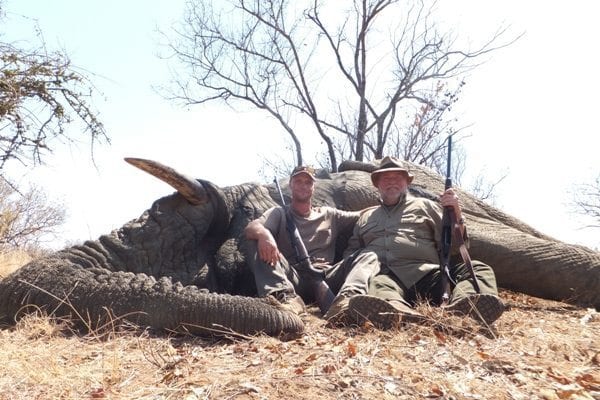
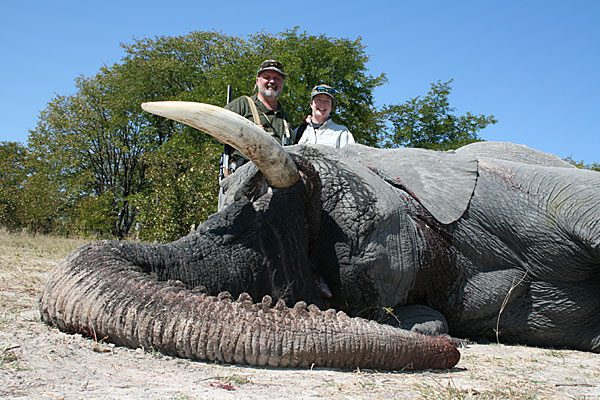


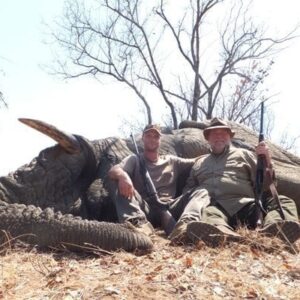
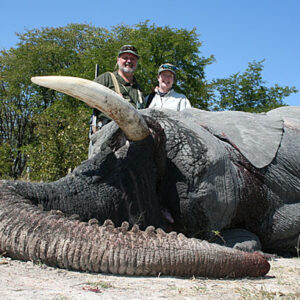
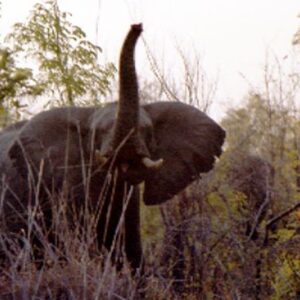






Reviews
There are no reviews yet.